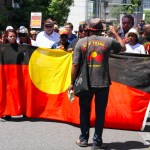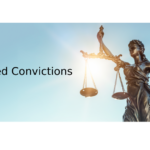How the Innocence Project is Helping Those Wrongly Convicted of a Crime

A couple of decades ago, if someone was wrongly convicted of a crime there was little that could be done once the appeals process had been exhausted.
Now, with more sophisticated forms of technology such as DNA testing to help identify suspects and provide substantial evidence, DNA evidence is being used not only to convict people, but also to exonerate those who have been wrongly convicted in the past, with the help of the Innocence Project.
What is the Innocence Project?
The Innocence Project began in 1992, as a legal clinic involving law students at Yeshiva University in New York City.
It is now a not-for-profit organisation that has expanded throughout the US, and across the world.
There are Innocence Projects in the UK, the Netherlands, Canada and New Zealand.
More recently, the Innocence Project has been operating at a number of universities in Australia, including Griffith University in Queensland, and the University of Technology, Sydney.
The founders of the Innocence Project, Barry C. Scheck and Peter J. Neufeld, wanted not only to help people who had been wrongly convicted, but also hoped the project’s work would show up weaknesses in the criminal justice system, and lead to reform.
How does it work?
The Innocence Project is staffed by qualified criminal lawyers, law students, and university faculty.
Convicted prisoners who believe they are innocent can apply to the project for a review of their case.
There are certain criteria that need to be met in order for a case to be considered by the Innocence Project:
- The applicant needs to have been through the court process and convicted
- The appeals period has to have expired
- The prisoner needs to believe they are innocent, rather than wanting to appeal the length of the sentence, or hoping to have the conviction overturned on a technicality
- If a sexual offence is involved, there needs to have been no admission of sexual contact
Once a case has been accepted, the team investigates, and arranges for any re-testing of evidence for DNA.
Depending on the results, and if it can be proven that the convicted person is innocent, the team will then work to have the conviction overturned, and the prisoner released.
How successful is the Innocence Project?
The Innocence Project has had a great deal of success in the US, with more than 300 prisoners being freed, including a number who were facing the death penalty.
Many of these prisoners had been in jail for over a decade before it was found they were wrongly convicted of a crime they didn’t commit.
Here in Australia, only one conviction has been successfully overturned as a result of the work of the Innocence Project.
At least two major problems are faced by the innocence project here in Australia.
The first is funding – the project is entirely funded by philanthropic grants. It receives no government funding.
The second is the problem of gaining access to evidence held by the police, which has in many cases been destroyed or just gone missing.
Students and staff at a number of universities continue to work on the Innocence Project here on a limited basis.
It is unfortunate the project receives no government funding, and that unlike the US, it is so difficult to access evidence from past cases.






